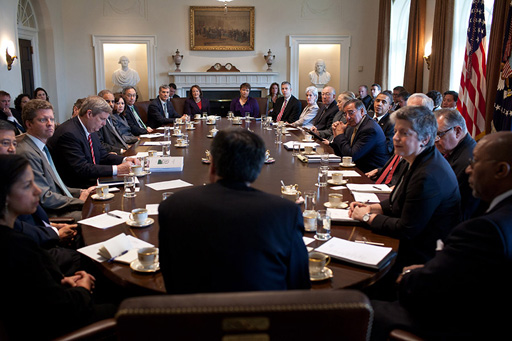1.4.3 Can leadership be distributed?
While leadership is often exercised by individuals, it is increasingly recognised that leadership is sometimes shared.
By and large, our view of leadership tends to centre around visible individuals and their talents, contributions and achievements. This view of leadership is not wrong, but it is no longer adequate.
You encountered the idea of distributed leadership in public settings when you listened to DCC Garry Forsyth of Humberside Police discussing the work of tackling Friday night binge drinking in city centres, in Leading policing: the night-time economy. The video showed the range of people involved in exercising leadership and interacting (or not) with each other to tackle this complex challenge. Shared leadership is often needed in situations where several individuals, teams or partner organisations seek to work together to tackle a complex problem, or where different types of expertise are needed.
Shared leadership is more complicated and time-consuming than individual leadership. For these reasons, it is most effectively deployed where the tasks are:
- highly interdependent
- highly complex
- requiring creativity.
So it is necessary to take account of the contexts or situations in which shared or distributed leadership can help to achieve tasks and build commitment to outcomes.
Distributed leadership is sometimes needed to encourage ‘ownership’ or commitment to particular outcomes. Social movements often distribute leadership, and challenges like those you saw in the night-time economy video will not be solved by a single person taking charge.
In some situations, vertical leadership (through lines of authority) can combine with shared leadership – as, for example, in teams that have an acknowledged head or a formal leader in terms of accountability and responsibility, but where a number of members in the team contribute to the work of leadership.
Where there is organisational ambiguity and major change, there may be a ‘leadership constellation’ whereby the leadership role formally and informally passes between different individuals and groups, with differing bases of expertise and legitimacy at different times. This was found in healthcare organisations by researcher Jean-Louis Denis, when he studied Canadian hospitals as they instituted changes in clinical and organisational procedures (Denis et al., 2013). Distributed leadership can also be part of a strategy that sees leadership as being about ‘leading others to lead themselves’. This is captured in the notion of transformational leadership which, among other things, argues that leadership includes strengthening the capacity of others to be empowered and to lead themselves.
So, through the idea of distributed leadership, it is possible to see leadership as a quality belonging to the whole organisation, network or system in which it is practised at different levels and is not just the preserve of senior executives. When leadership skills and responsibilities are decentralised, there is a new focus on sharing knowledge and power as well as dispersing leadership. Distributed leadership presents a new way of thinking about the role of formal leadership at the top of the organisation, acknowledging that the role of senior leaders is sometimes less to lead from the front than to enable others to lead. In so doing, the dependence (or sometimes over-dependence) of followers on formal leadership figures decreases, and the whole group may become more empowered.

